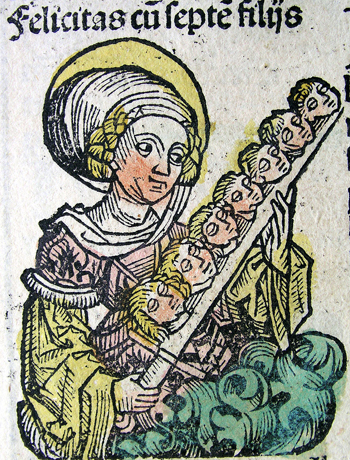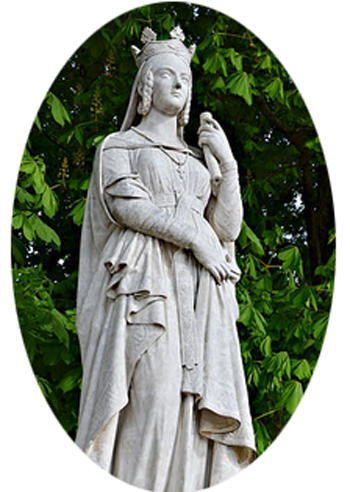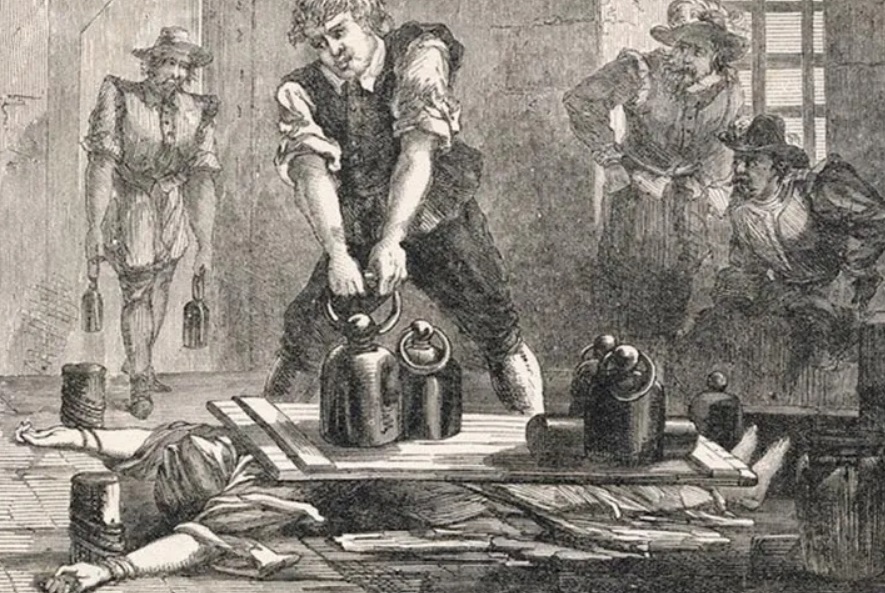Book reviews
 |
 |
 |
 |
 |
 |
 |
An Inspiring Array of Wives & Mothers
Who Became Saints
Book Review of Great Wives & Mothers by Msgr. Hugh Francis Blunt, 1st ed Devin-Adair Co, 1917; reprint Lepanto Press, 2006, 424 pp.

Hollywood, the public-school system and the media managed to turn the established order of the family (patterned on the Blessed Trinity itself) upside down by inducing women, the very heart of the family, to revolt against men (the head of the family), thus disrupting the mental and emotional stability of an institution whose hierarchical order was ordained by God Himself.
In Great Wives & Mothers, author Msgr. Hugh Francis Blunt praises wives, mothers and single women whose lives follow the Virgin Mary's example of putting God first. Emphasizing that sanctity comes from all walks of life and nationalities, Blunt presents a selection of women ranging from slaves to queens.
Some of the holy women are mentioned in passing, others have pages devoted to them. The one complaint I had about this book was that, despite this claim, there were no examples of women from countries other than the United States and European nations. Notwithstanding, the book does illustrate that sanctity is attainable for all.
Some of the women are famous or well-known, such as St. Margaret of Scotland, St. Elizabeth of Hungary and Queen Isabella of Spain. Others are less well-known today, such as St. Sabina, a matron who lived during the reign of the Roman Emperor Hadrian and was martyred in 126 A.D. Another is St. Felicitas.

St. Felicitas preferred to see her seven sons killed than have them renounce the Faith
"Unhappy woman," said the Prefect to her, "is it possible you should think death so desirable as not to permit even your children to live, but force me to destroy them by the most cruel torments?"
"My children," she answered, "will live eternally with Christ if they are faithful to Him, but must expect eternal death if they sacrifice to idols."
Again the Prefect exhorted her: "Take pity of your children, Felicitas; they are in the bloom of youth, and may aspire to the greatest honors and preferments."
"Your pity is really impiety," she answered, "and the compassion to which you exhort me would make me the most cruel of mothers." (pp. 9-10)
All seven sons, like the mother, refused to offer sacrifice, and were martyred by various methods before the eyes of their mother, who joyfully encouraged each one in their tortures and deaths.
A slave girl becomes Queen of France
Among the queens profiled is Christina of Sweden, who renounced her crown to become a Catholic. Another is St. Bathilde, a slave in the house of the Mayor of Neustria in Gaul, being a servant of his wife. She attracted notice by her unusual qualities of mind and her piety, so much so that the Mayor had the utmost confidence in her and gave into her care the management of many of the affairs of his household.

A statue of St. Balthilde in of Luxembourg
King Clovis II met her in the Mayor's palace, and he was so struck by her beauty and by the high praise she received from all that he freed her and married her in 649. She remained as humble as Queen as she had been as a slave. Her new dignity only gave her more time to pray and a better opportunity to do works of charity.
Seven years after the marriage, Clovis died, leaving three sons. The eldest, Clothaire, was proclaimed King, but since he was but five years of age, his mother was made Regent. Bathilde applied herself to the work of governing the kingdom and made many reforms, among other things abolishing the custom of trading in Christian slaves.
She founded many charitable and religious institutions. When her sons were well established in their respective territories, she was able to carry out her wish to become a religious and retired to one of the abbeys she founded.

St. Margaret Clitherow suffered a terrible death that won her a martyr's Crown in Heaven
Margaret Clitherow, the first woman to be martyred during Elizabeth's reign, was a humble wife and mother of three children. She became Catholic after her marriage; although her husband remained a Protestant, he did not prevent her from her practice of her new Faith.
She often harbored priests in her house, which was considered treason and was punishable by death. She arose early every day to pray for at least one-and-a-half hours, heard Mass in her home chapel when a priest was available, and did humble tasks in her home (even at times helping her servants or doing their tasks).
Notwithstanding her hidden austerities like the hairshirt she wore and severe fasts she followed (three days a weeky eating one meal), she was always cheerful and ready to partake of wholesome merry-marking. At four p.m., she would spend an hour in prayer with her children and teaching them the Faith.
Eventually, she was arrested for harboring priests and sentenced to death. Pregnant with her fourth child, a door was laid over her body and she was pressed to death by heavy weights set over it. Her two sons became priests and her daughter a nun.
A wife & mother founds an Order
St. Jane Frances de Chantal was called by God through St. Francis de Sales to become a nun after the death of her husband, even though her youngest child, a son, was only 14 years of age. The boy actually threw himself over the threshold of their door to prevent his mother from leaving, crying in anguish. Because she understood that God was calling her to the religious life, she stepped over him to leave.
Such was her seriousness and profundity of spirit. Under the guidance of St. Francis de Sales, she founded the Order of the Visitation. (She made provision for her children's welfare before taking this step - one daughter had recently married the Baron of Thorens and her two remaining daughters accompanied her, although the book does not mention this.)

From Protestant socialite to Catholic foundress of the Sisters of Charity
Elizabeth Ann Seton was born into one of the socially prominent, rich, and well-connected families of New York. When she converted to Catholicism, she was shunned by society and her own family. Since her husband's business had failed before he died, she was also impoverished. Despite all her trials, including poor health, this remarkable woman not only founded the Sisters of Charity, she established the country's parochial-school system, our first Catholic orphanage, opened and operated many hospitals, and cared for the sick and poor.
As the reader can see from these examples, the book is a treasure of tales of saintly women who rose to great spiritual heights regardless of their status in society, wealth, health, beauty or dispositions. Although one cannot relate to each woman's circumstances, the variety of lives that Msgr. Blunt presents is certainly sufficient to encourage each one to strive for sainthood. It is truly inspiring.
Posted April 4, 2021
______________________
______________________





